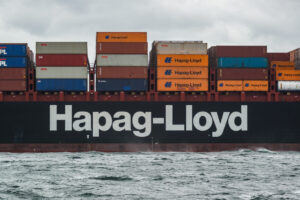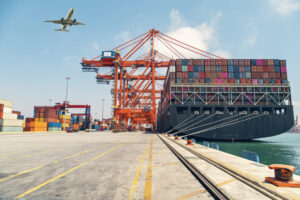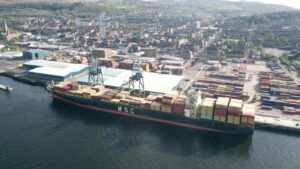Mobile apps are becoming something of an industry necessity in today’s marketplace as the growth for mobile app marketing continues its incline as one of the most profitable industries in global business. According to VentureBeat, the annual revenue of mobile apps will reach around US$70 billion by 2017.
While the games industry drives the majority of app revenue, this could all change in the next few years, as a wider variety of companies harness the potential of mobile apps in growing their businesses. Non games-based apps are set to double their market share of mobile app revenue by 2017, from the current 26% to 51%.
This suggests that a number of industries around the world could see a higher share of revenue from the introduction of mobile apps. The port industry in particular is in a nascent stage in its decision to develop and utilise apps for operations purposes, however, a select few ports are already using apps to improve their cargo activities.
The Port of Boston announced in early September, 2015 that it is utilising a mobile application at its port to allow terminal customers to check on the availability of containers in real-time. Mobile app developer Crux Systems has also recently released an app which provides truck drivers and marine terminals with information on container availability.
Shipping lines are also making headway in the mobile app industry, with the world’s third largest carrier CMA CGM recently announcing that it has launched a mobile app to track the status of cargo while in transit.
(Source: iStock)
Evidently, apps can play an important role in both port and shipping operations, but what area of a port can mobile apps deliver the biggest impact?
“The most impact a mobile application has in a port is in the field, especially when the user is moving from one place to another”, argues Tjerk Smit, Frontend Developer at Web and Mobile Application company De Voorhoede in Amsterdam, Netherlands: “Mobile applications can be part of the Internet of Things (IoT).
“The IoT is where devices, objects and equipment create a network with each other and exchange information. Mobile applications can be the central place where all the information is gathered and shown to the user.”
The IoT is becoming essential for connecting physical devices which are used to build a network that communicates large amounts of data. Mobile application company JLT previously detailed that many networks in ports were built around 10 years ago and do not have the infrastructure to support increased data usage.
However, with the appropriate digital infrastructure in place, such as cloud services and mobile devices, more efficient use of data can be achieved. This is where mobile applications can enhance a digital network, by providing Bluetooth applications that run alongside an IoT network and thereby enabling remote data communication via the use of mobile applications.
Mr Smit continues: “With a mobile application a user can also be more productive and efficient. With Bluetooth he can make a connection to different equipment and read out data from a distance. He doesn’t have to go to each equipment panel separately.
“He has a central hub where he can get his information. If he sees that equipment has a failure, he can take action on location. In the field you have a better feel of the situation and what actions are best to take. Also, logging information is more efficient with a mobile application. A user can report damages or other data instantly. Everything can be stored directly in a database from the field.”
(Source: iStock)
The concept of Big Data is also relevant here, as large amounts of data can be logged through mobile applications. Screen-in-screen video, which enables managers and port workers to watch each other at work, can also be a strong element for not only enhancing task management at ports but also for strengthening port security. Managers can use mobile devices and apps to view the area of port remotely to identify threats.
The Rise of Big Data in Ports and Terminals
“Mobile video is just one element of mobile security”, says Jim Argiropoulos, President of mobile operations platform Lexray. “Being able to view an entire port on a tablet or remotely is a powerful tool. Integrate vehicle license scanning functionality with that video, and you have the ability to run real-time security checks and receive instant alerts.
“When you add in operations management tools the entire command center is available on a tablet or phone. This is just the beginning of what mobile apps can provide for port security. Add screen-in-screen video and managers can guide each worker through a process or problem while using their mobile app or notepad to enter data or take notes.”
In summary, mobile apps have their place in a number of different areas of a port’s operations. However, to make the best use of a mobile application, it is important to consider how well connected a port is in terms of its digital infrastructure, i.e. the IoT framework that is installed to facilitate these apps.
Once a port has the appropriate digital network set up, such as cloud services, WiFi, Bluetooth and other internet technologies, this will pave the way for utilising thousands of apps that have applications across a whole spectrum of a port.










